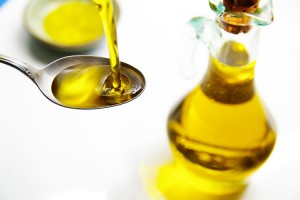How to Choose the Best Extra Virgin Olive Oil
Leonardo Olive Oil September 6, 2016 Health and Nutrition 3216 ViewsIt’s common knowledge that a wine’s taste and quality depend on multiple factors, including the terroir, the vintage, the region and even the grapes, but did you know that the same goes for olives and olive oils? With an exhaustive list of options in the market today, it can be quite a task to choose the best option, but it doesn’t have to be; read on to see how you can pick the best olive oil.
Origin
Before all else, check where the oil comes from. ‘Made in Italy’ doesn’t necessarily mean it’s the best; sometimes olive oils from other parts of the Mediterranean are also added and the final product is bottled in Italy. This may sound impressive, but understand that the longer the time between harvest and processing, the higher that chance of the oil degrading.
Cold-Pressed
Flavour and aroma are crucial when it comes to EVOO. Applying heat may get you more oil, but in the process also destroys the very integrity of the olives and the resultant oil. Taste and observation aside, for an oil to truly be considered extra virgin, first and foremost, it needs to be “cold” pressed. The cold-pressed method ensures that no heat was used to extract the oil. The term itself just means that during the pressing method, the temperature did not exceed 27°C (room temperature). Also, EVOO must pass many tests, including ensuring that the oleic acidity is below .8% at press.
Related: Five Reasons Extra Virgin Olive Oil Is Good For The Heart
Age
Unlike wine, olive oil is not supposed to age. A good bottle of Extra Virgin Olive Oil will have a harvest/pressing date or sell-by date on the label, so you will know the age of the product. Olive oil can possibly be stored for up to two years, provided it is stored under optimum conditions; usually a dark, cool place; better yet, buy only as much as you plan to consume.
Colour
Despite popular belief, the colour of olive oil does not actually indicate its quality. EVOO can range in colour from deep green, to golden yellow; the colour variance depends on the chlorophyll levels.
However, it is important to look at the packaging. Exposure to light, heat, or oxygen can cause rancidity. Look for EVOO in dark green glass or packaging that shields it from light.
Taste
Sometimes following your taste buds is the only way to gauge the quality. EVOO has varied flavor profiles, including, floral, buttery, nutty, herbal and even spicy, so it’s usually best to trust your sense of taste and smell to find the one that works best for you. The flavour should also feel “clean” and “refreshing” on the palate, without any after taste (rancidity).
The Italian word “amato” best describes the feeling of tasting a top quality EVOO has: a peppery finish that begins on your tongue then smoothly migrates to back of your mouth.
While all these considerations might be a lot to take in, know that choosing the right EVOO can be the difference between just ok, and sublime.











